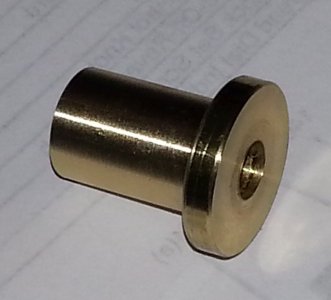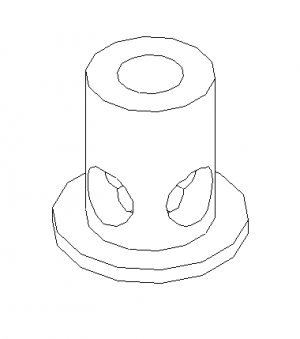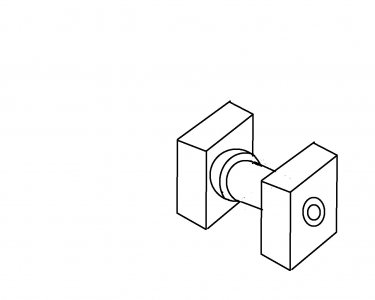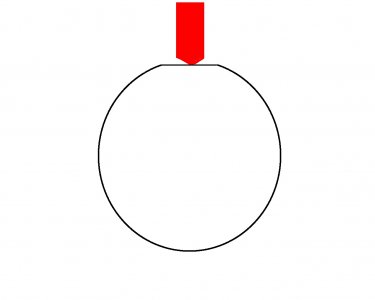- Joined
- Jul 4, 2014
- Messages
- 156
Guys
I want to drill cross holes on this small brass part I am making. These holes need to be at 90 degree apart. I can get it by drilling two through holes or drill four holes half way. The diameter of the part is 1/2" and the holes are 1/4". The part has a through hole of 1/4" diameter. As you will see.


Here is a list of equipment I have.
1. Mini-mill with Kurt Style vise
2. Vee blocks of suitable size with appropriate clamps.
3. Edge finder if needed
I know I will not be able to through drill if I use the Vee block. I will have to drill four times.
My question is how to get the holes at 90 degree apart? (I.E., Without a dividing head or an indexer)
What is the easiest method?
Thanks
Prasad
I want to drill cross holes on this small brass part I am making. These holes need to be at 90 degree apart. I can get it by drilling two through holes or drill four holes half way. The diameter of the part is 1/2" and the holes are 1/4". The part has a through hole of 1/4" diameter. As you will see.


Here is a list of equipment I have.
1. Mini-mill with Kurt Style vise
2. Vee blocks of suitable size with appropriate clamps.
3. Edge finder if needed
I know I will not be able to through drill if I use the Vee block. I will have to drill four times.
My question is how to get the holes at 90 degree apart? (I.E., Without a dividing head or an indexer)
What is the easiest method?
Thanks
Prasad
Last edited:









